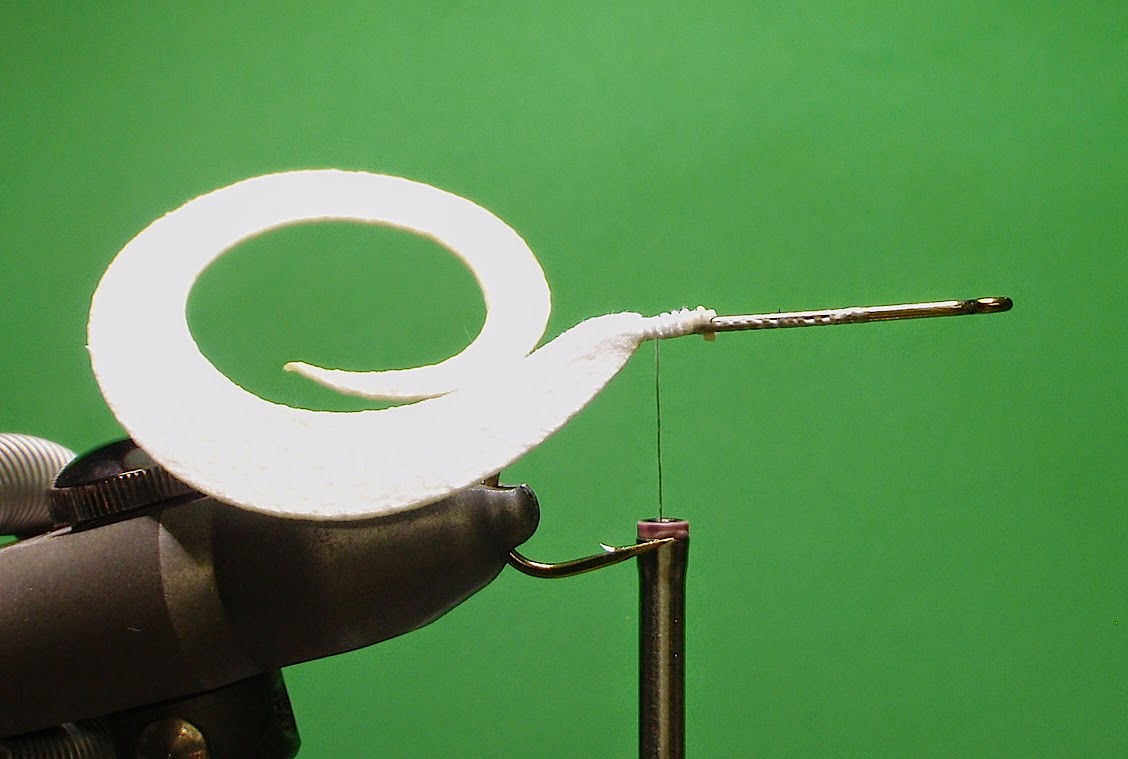After the initial plop on the water, it's pretty quiet and subtle... kinda of sneaky, like a slider. It's especially good when the water temp isn't quite warm enough for the real aggressive popper bite, but you still have your heart set on bringing them to the surface. Once it lands, work it similar to how you would work a popper, twitch/pause... twitch/pause.
Step 1: Place a Daiichi 2460 size 1 hook in your vise. Using Uni-Thread 3/0 in a color similar to your foam, tie in and work it to the rear of the hook, just before the bend.
Step 2: Wind some Ice Dub onto your thread and work your way toward the front of the hook about 1/2". As you can see in the photo above, I stopped the dubbing where the rear body segment meets the middle segment... this will be our tie in spot.
My favorite colors for Ice Dub are Olive and Peacock Black.
Step 3: Place a Hopper body on top of the hook and tie it snug with 4 to 5 wraps. I make the Hopper bodies with 5mm Funky Foam (Hobby Lobby) and a Beavertail die cutter (Hareline). Pre-cut bodies available at www.boneyardflygear.com on the Fly Gear page.
My favorite body colors are Tan, Green and Black.
Step 4: Tie in (4) Grizzly Round Rubber Legs (Hareline) on top of the body, leaving about 1 1/4" to the rear and the rest toward the front.
Not too tightly as we will be moving the legs soon.
My favorite color is Olive for the legs.
Step 5: Place some more Ice Dub onto your thread, hold the legs and body back and wind the thread forward the the next segment juncture (almost to the front of the hook).
Step 6: Tie the body in snugly again with 4 to 5 tight wraps.
Step 7: Grab the longer portion of legs and tie them in on top of the front segment juncture as shown here. Leave an arch in the middle as shown. Again, don't tie the legs in too tightly.
Step 8: Cut the legs in the center of the arch.
Step 9: Using both hands, pull two legs to each side of the body and even out the lengths so they are all similar. Spend some time getting the body and legs positioned as neatly as possible.
Step 10: Using a Flexible cement such as Dave's Flexament or Softtex, place a drop in each section where the thread pinches the legs and allow to dry completely. Do NOT use Zap-a-Gap or similar non-flexible glue here or the legs will get funky.
You are finished! Yours should look similar to this when completed.
Visit my website for more information on guide trips and gear.






















.jpg)



